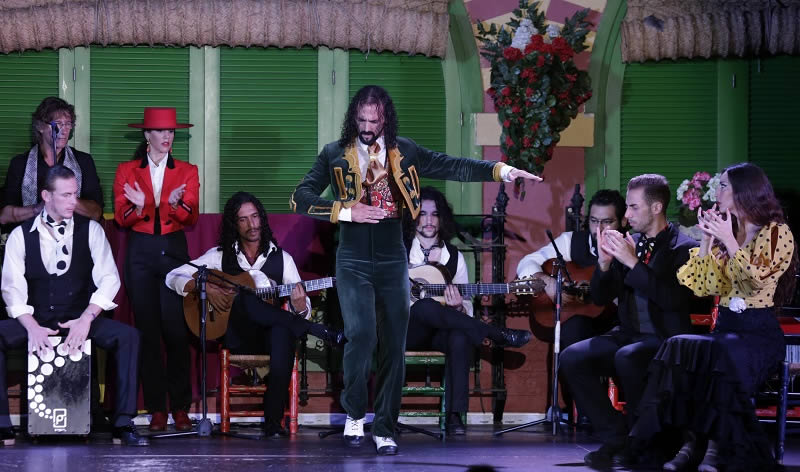
Flamenco is an art full of emotions, emotions that is perceived from the lyrics of the songs until the interpretation of artists. Examples of how the feelings are present in this Andalusian art found even in the denomination that is given to some flamenco styles: Alegrías (hapiness) and Soleá (loneliness). Only with the name, we can perceive what kinds of feelings transmits each of these styles, right?
Alegrías and Soleá are two flamenco singing to accompany dancing important in flamenco. If you want to learn more about its origin, history and the elements that characterize these forms of flamenco, we invite you to keep reading this article.
To understand what are the styles of flamenco, it is advisable to remember the four basic elements that give life to this art that are the singing, the dance, the guitar and the styles.
The song is the essence of flamenco, in fact the flamenco in its origin was only sing, we can define it as the vocal interpretation of the ‘flamenco singers ‘, its the voice. With this in mind, the styles are the different varieties of flamenco singing that exist.
There are more than fifty styles of flamenco, which say are each one of the styles of singing that there is, that are grouped according to a series of characteristics such as their origin, the beat or if accompanied or not dance or guitar, among others. The traditional division distinguishes between basic songs, fandangos and their derivatives and, lastly, those flamenco modalities that have regional influences or American.
And, among these many singings, what was the first flamenco style? The fandango, which since the seventeenth century, was the best known in Spain. A style that has evolved over time with the incorporation of instruments such as bandola or dance accompaniment, something that has led to the creation of other flamenco styles such as malagueñas, granaína, taranto or jaberas, among others.
Other flamenco styles emerged from making changes to the lyrics and music, as was the case with the cañas, tonás or polo. The incorporation of the guitar also influenced the birth of new styles, which prompted the birth of new rhythm-styles and adapted to flamenco dance, such as bulerías, jaleos, tangos and tientos.
The evolution of the jaleo led to the creation of different variants among which is Soleá or Soleares, being La Andonda the first female singer of soleares recognized by the flamenco tradition.
Multicultural influences have been key in the evolution of flamenco and this is something that can also be seen in flamenco styles. In the great Andalusian ports of Malaga, Seville and Cádiz, tangos and tientos developed with a great influence of American black music. In the city of Cadiz was born the group of the cantiñas, whose central pole and one of the best known is the Alegrías.
Although Soleá is not the oldest, it is the style that has best preserved the values and qualities of ‘jondo art’: for its compass (combination of 6/8 and 3/4); its tone and its melody.
It is one of the most danced and emblematic styles of flamenco and, given its characteristics, it adapts very well to the interpretation of flamenco dancers, since it invites to perform hip swings, waist swings and arms movements more typical of women .
Singing to Soleá accompanies the guitar. The most sung lyrics of the soleares refer to places in America such as Havana or Puebla. In a series of soleares, the lyrics do not have much to do with each other, because they deal with different themes and the singer can take a tour of the sentimental variety of this stick during his performance.
We could say that a soleá is structured in the following way: introduction of guitar, ayeo of exit (the interpretation of the ‘ay ay ay’ of the singer); sing of preparation, brave singing and auction, with falsetas interspersed during the interpretation of the different lyrics (the falseta is the part of the music that the guitarist improvises).
As its name suggests, Alegrías is a party and joy style. A light, cheerful and sensual style, which also belongs to the dance songs, and whose melody incites the dance. His compass is the same as that of the Soleá, but it goes faster.
It belongs to the cantiñas genre and is the ideal counterpoint to the soleá. As for the structure of the dance consists of entrance, walk, silence, castilian and escobilla (moment of the dance with zapateado), to conclude with an adjustment (haughty gesture of the bailaor or bailaora before the public to finish the performance).
The origin of the Alegrías are located in Cádiz, at the beginning of the 19th century. The birth of this flamenco style was the result of the coexistence of Aragonese and Cádiz, during the French invasion. From the cultural exchange was born the ‘jota de Cádiz’ which became like flamenco, with the influence of the rhythm of the soleá, and gave as a result the joys. Hence, many of the letters in this suit refer to episodes of the fight against the French.
If there is something that characterizes and that makes this flamenco club recognizable, it is the ‘tiritrán tran tran‘ with which the cante begins, an expression attributed to the Cádiz-born Ignacio Ezpeleta and Enrique Butrón, who established the flamenco form of this singing.
The Alegrías and the Soleá are pieces that are not usually lacking in the current flamenco shows, such as El Palacio Andaluz. In the two daily passes that we celebrate in our tablao, you can enjoy these flamenco styles thanks to the magnificent performances of our artists. Make your reservation online and do not miss it!
© 2023 El Palacio Andaluz. All rights reserved.